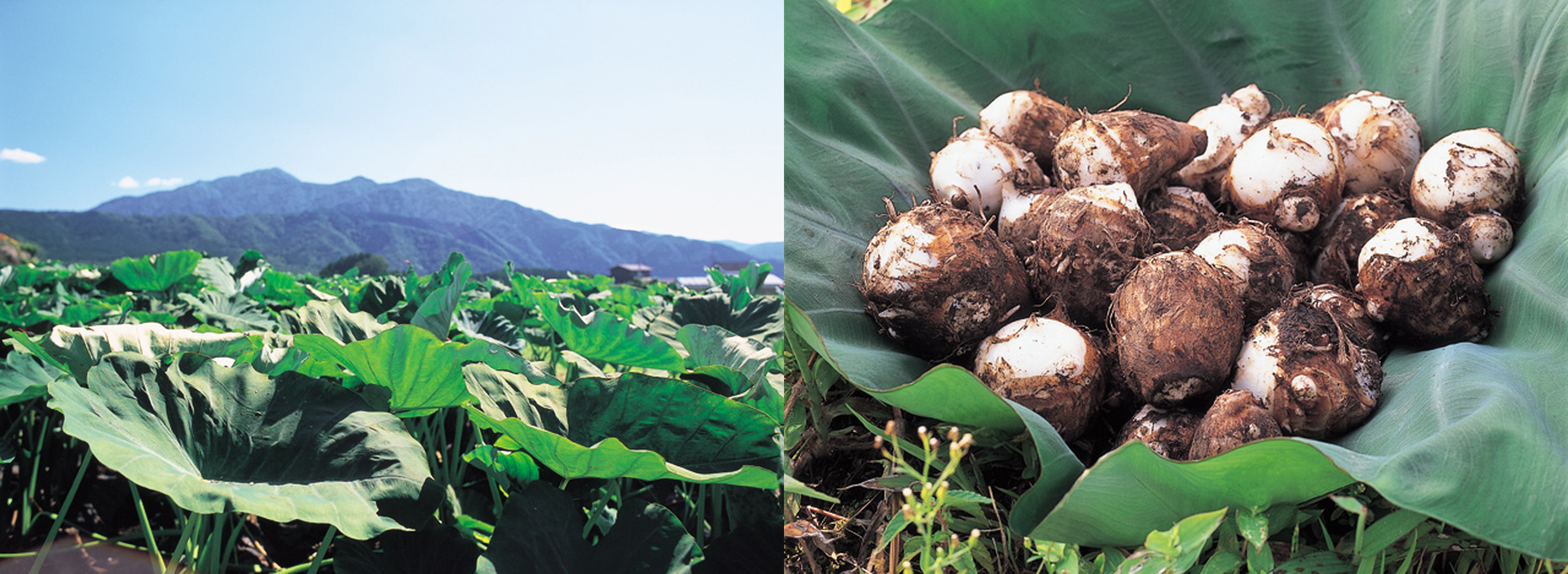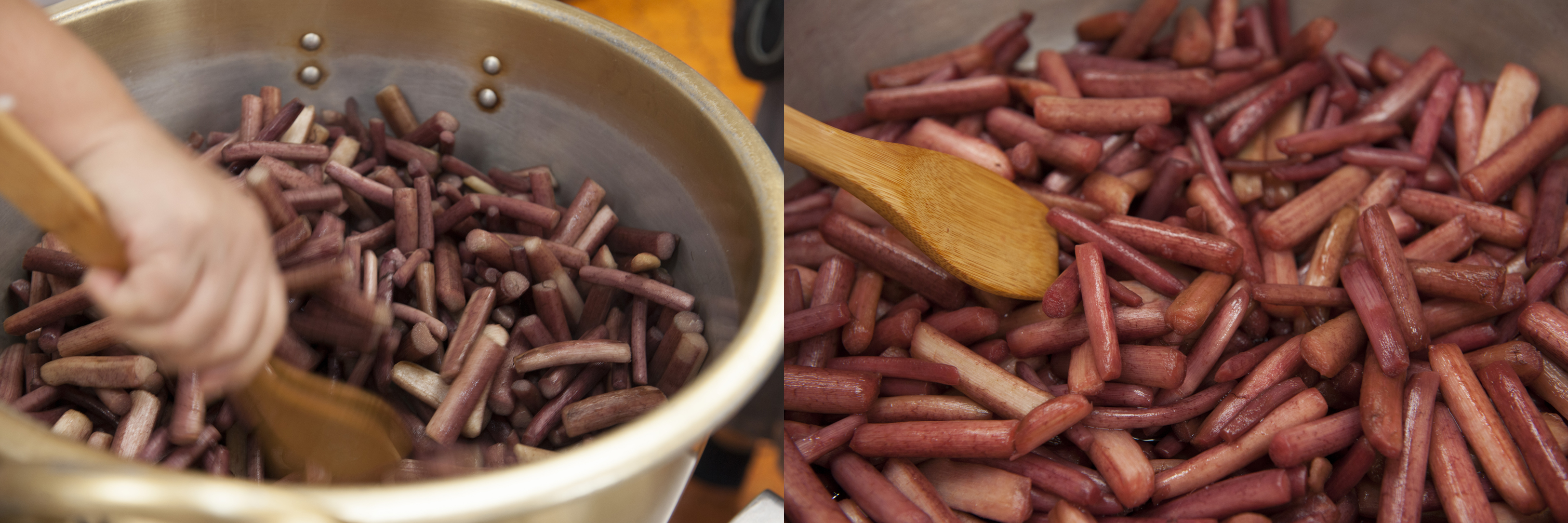TRAVELOGUE Fukui
“The Proud Traditional Food Culture of Japan’s “Best” Prefecture”
- text : Kosuke Miyata
- photo : Koki Nishimura
- edit : Seiji Takeuchi (nano.associates)
chapter 2
Miraculous Satoimo, Only Growing in the Land of Fukui
Oono City is about 30km east of Fukui City. It’s surrounded by mountains in every direction and so abundant in nature. A certain species of satoimo (taro) here grows nowhere else in the whole nation. Kamishou satoimo is now a well-branded product of the area, but the local people also call it taimo (“potato of the rice fields”) because it’s sometimes grown in rice paddies.
Kamishou satoimo is characteristically very dense and firm, and will maintain its shape even if stewed or simmered for long hours. Its unique texture and viscous stickiness is something you won’t be able to experience with any other kind. The secret of its creation lies in the area’s sandy, loamy soil. Kamishou district is an alluvial fan spreading out from the foot of Mt. Arashima-take to the east. The special soil is perfect for draining, and means that nutrients from fertilizers are quickly absorbed and easily passed from parent potatoes to the smaller ones, gives dense and well-concentrated satoimo. Its characteristic stickiness is caused by an enzyme called mucin, which is said to help the detoxifying process of the liver. Scientific research showed that the hexagonal structure of starch in Kaimisho satoimo was much neater than other kinds of satoimo.
Simmered Satoimo: Sweet Dessert
This typical and well-known traditional dish using satoimo is known as nikkorogashi (“boiled in broth”). It is often served as a sweet alternative to children’s desserts. Of course, it appears in Houonkou ryouri too.
After washing off the outer skin, simply add sugar, soy sauce, mirin and sake, then leave it to simmer. The great thing about Kamishou satoimo is that it does not get mushy no matter how long it’s simmered.
Suko (vinegared red satoimo stems)
This region also has a culture of eating satoimo stems, but not so much stems of satoimo they harvest. They call the usual satoimo stems Ao zuiki (green stems) and what people nowadays prefer and enjoy eating are red stems, harvested from the satoimo called yatsu-garashi imo. In this region, people plant a special line of this red stemmed satoimo at the edge of their field.
Healthy Suko, Preserved for Winter
Suko, the vinegared red satoimo stems harvested in August and September, is a traditional cuisine of this region. The recipe is very simple. First dry-fry the red satoimo stems and then add vinegar, salt and sugar. The skin of red satoimo stems is extremely thin, so it requires skill to peel it off beautifully. This one step makes the whole difference in making suko a beautiful dish. When the peeled stems are dry-fried, it gradually turns redder, and as soon as you add drops of vinegar, it instantly transforms its colour to much more vibrant red. The cooked stems are then left for 4-7 days. Meanwhile, the red color tempts your appetite, and the crispy and crunchy texture and the refreshing tartness makes it a great side dish for alcohol.
This characteristic red colour comes from the pigment anthocyanin, which is said to be good for your beauty and health for it ‘cleanses’ the blood. In the old days, it was referred as something that “brings down old blood”. People had a custom of eating it if they became anemic. Because it’s pickled in vinegar, it has good keeping, and is therefore a greatly appreciated stock food for winter.






